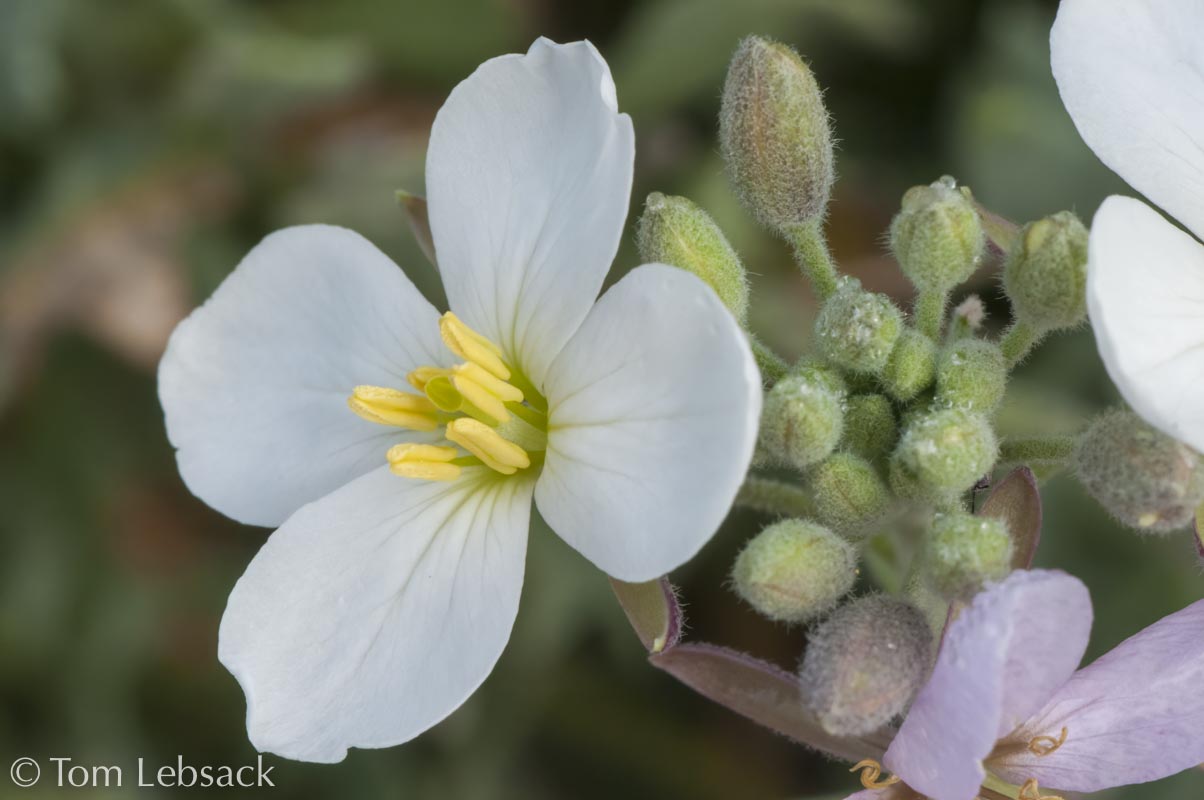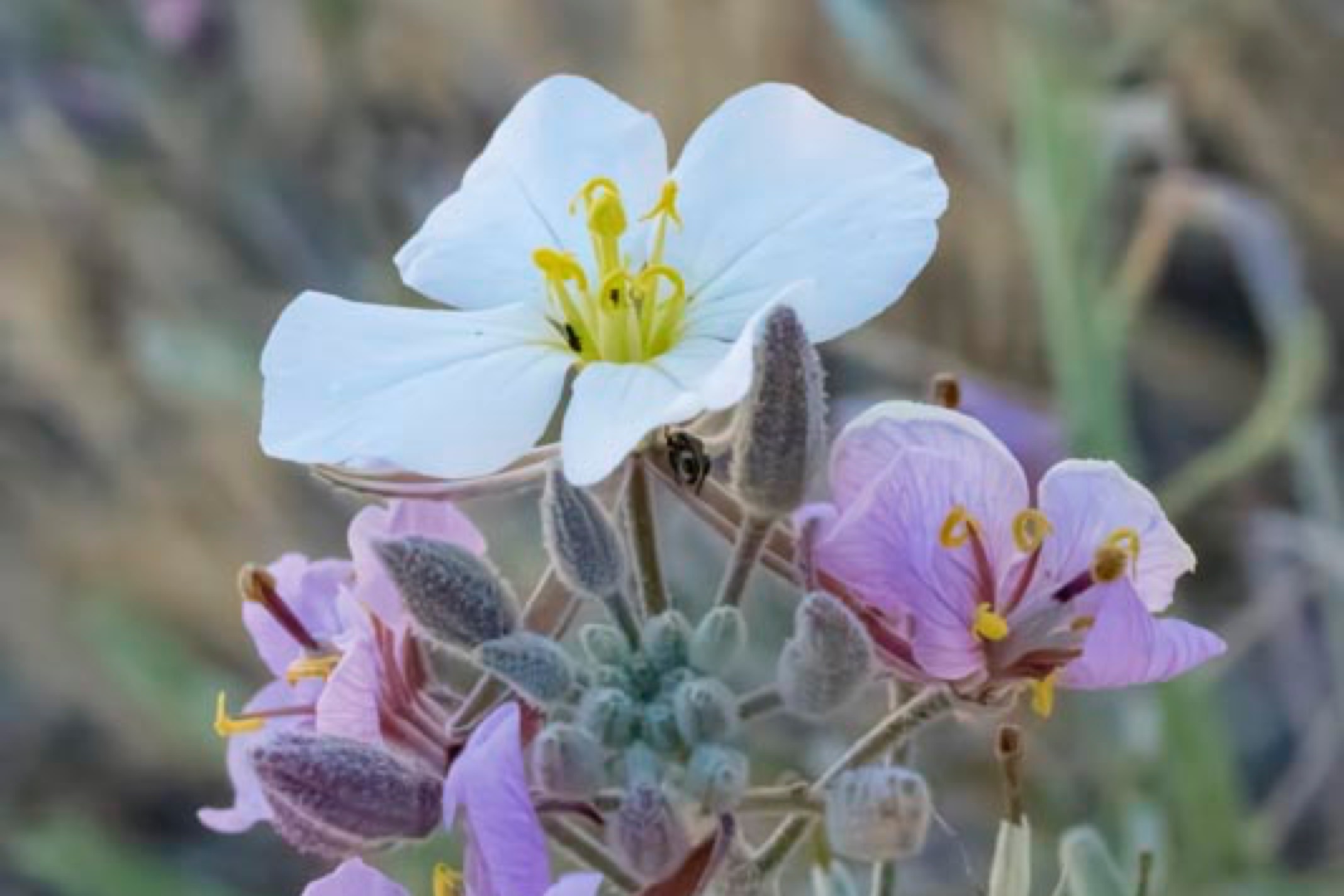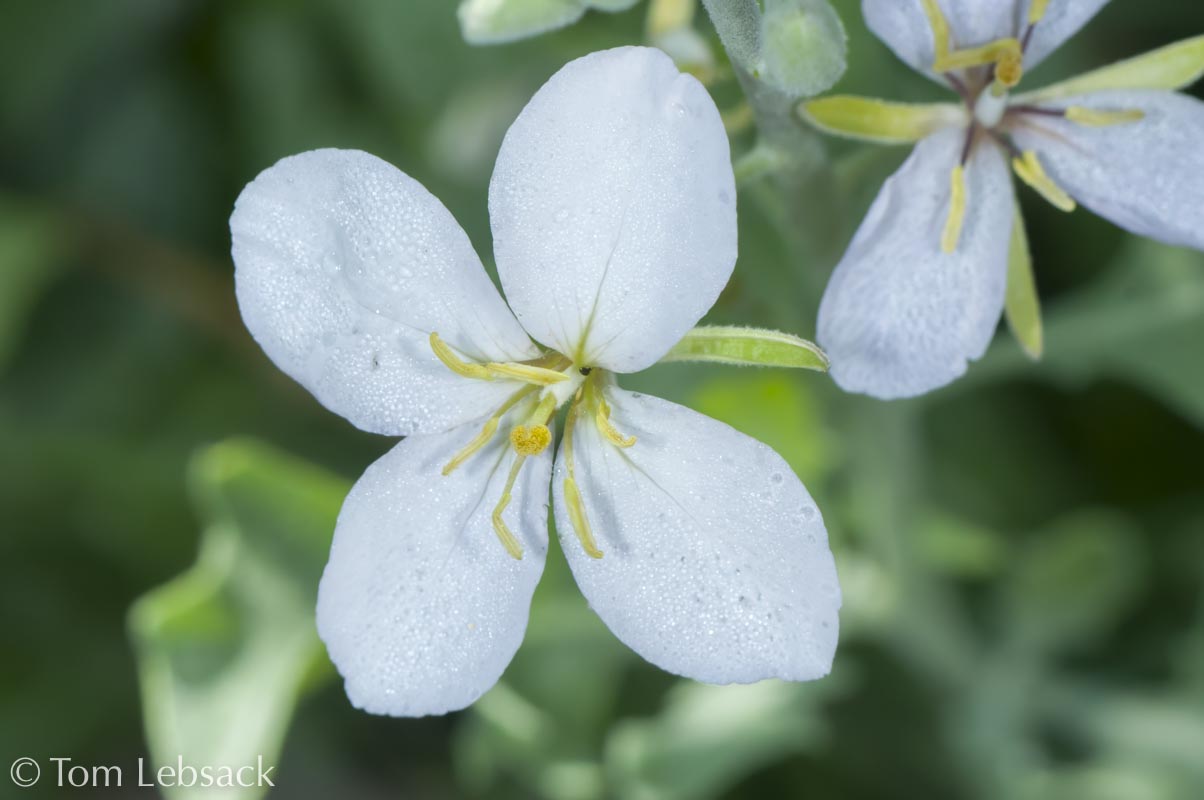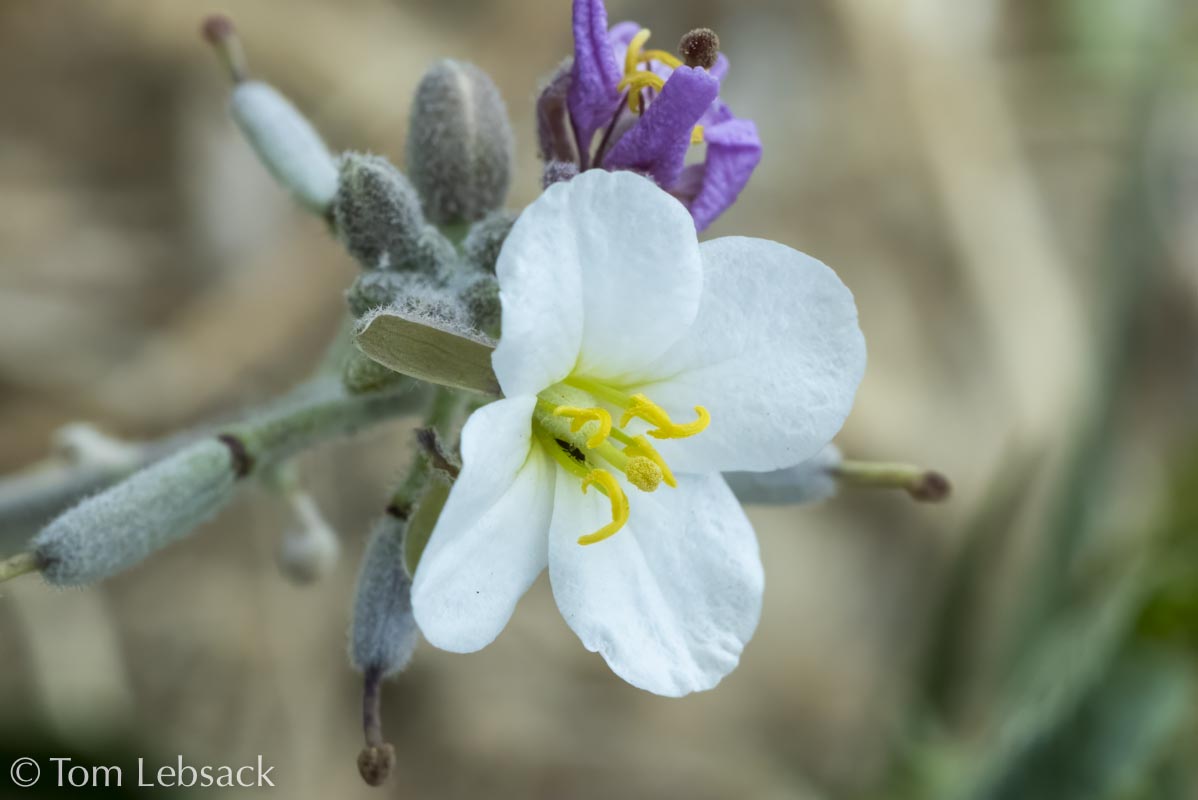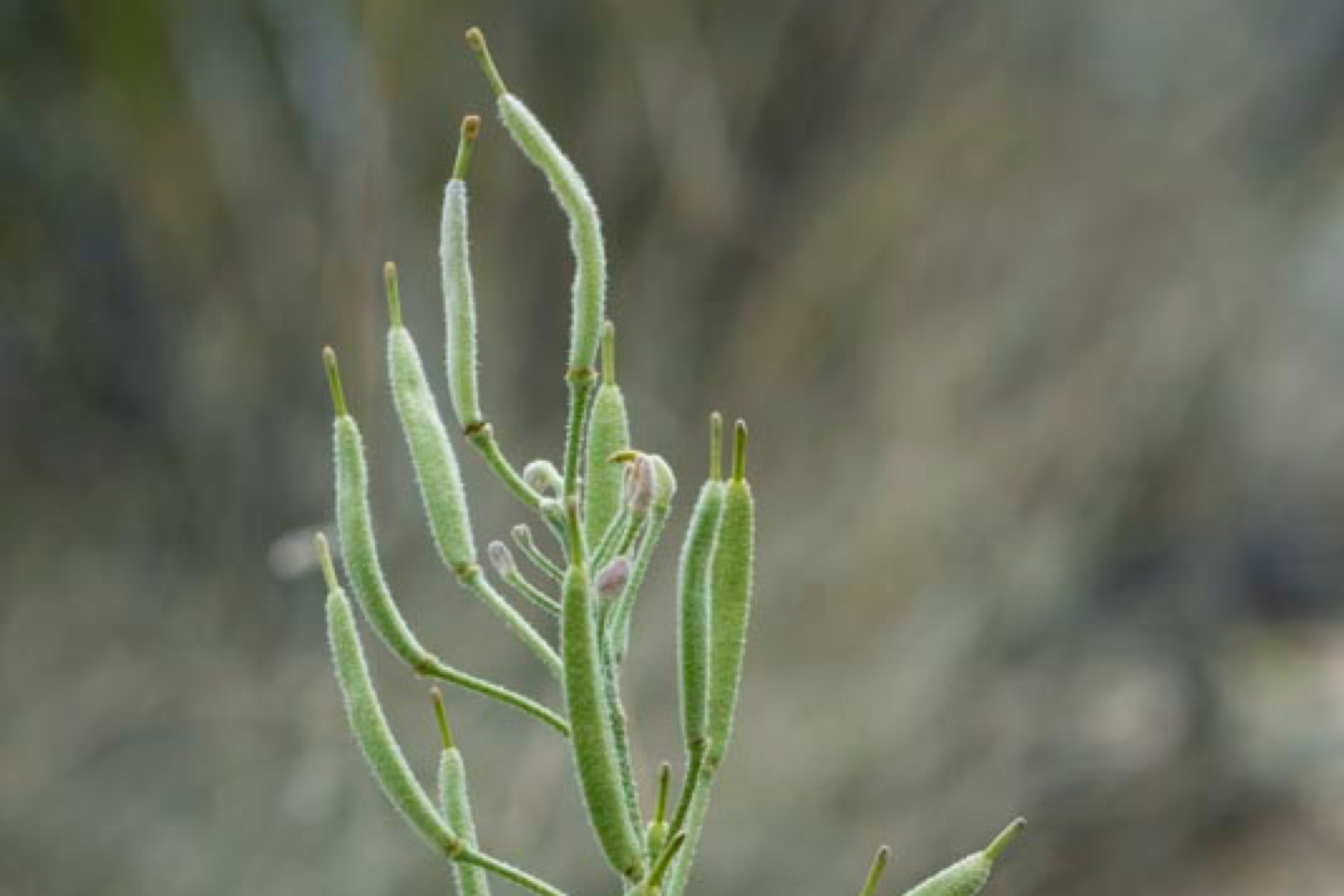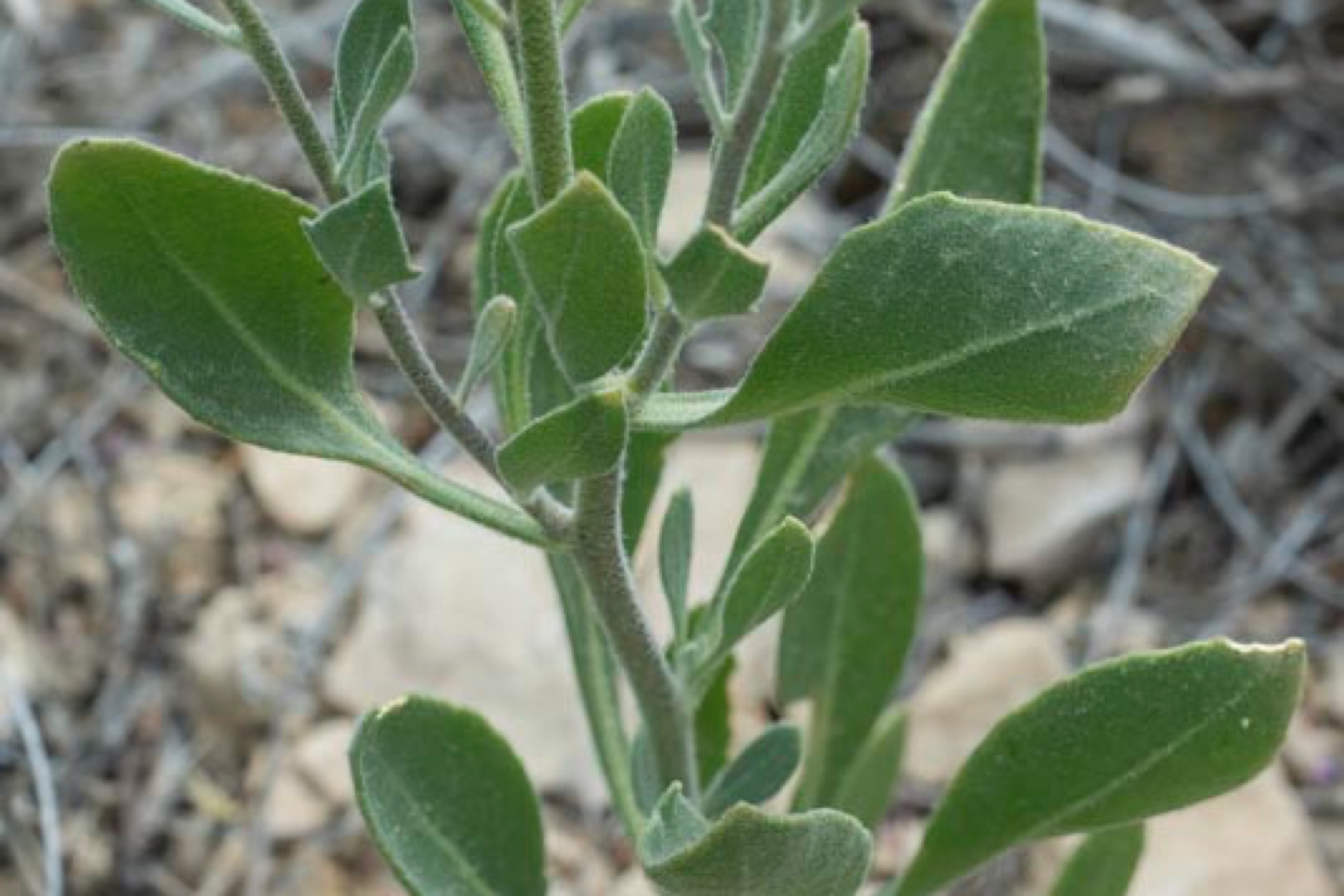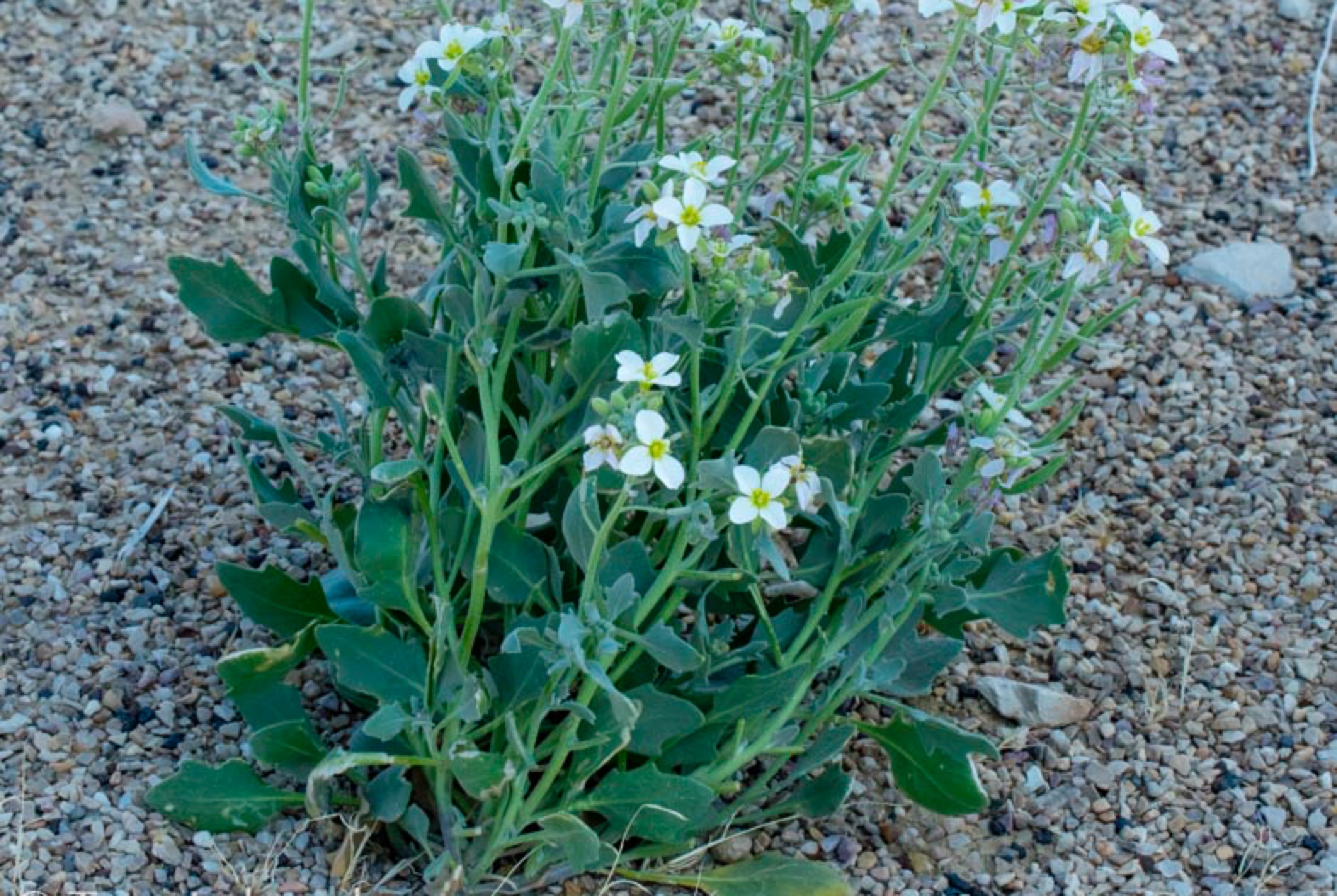Texas Wildbuds
Nerisyrenia camporum
(Bicolor Mustard)
| Scientific Name | Nerisyrenia camporum | USDA PLANTS Symbol | NECA3 |
| Common Name | Bicolor Mustard, Mesa Greggia | ITIS Taxonomic Serial No. | 23258 |
| Family | Brassicaceae (Mustard) | SEINet Reference |
Click Here |
| Description | Habitat: Dry, gravelly or sandy locations, often in rocky areas. Plant: Small, sprawling, low-growing perennial with multiple stems 8 to 24 inches tall; stems and leaves moderately to densely pubescent or becoming smooth. Leaves: Grayish green, obovate to oblanceolate in outline, margins lobed, dentate or wavy, or entire, petiolate, 3/4 to 2-3/8 inches long. Inflorescence: Racemes up to 14 inches long congested with white and light lavender blossoms in flower and elongated in fruit; flowers 3/4 to 1-3/8 inches across on pedicels 3/8 to 3/4-inch long, with 4 spreading sepals and 4 petals. Bloom Period: February to August. References: "Manual of the Vascular Plants of Texas" by Corell and Johnston and SEINet. |
BONAP Distribution Map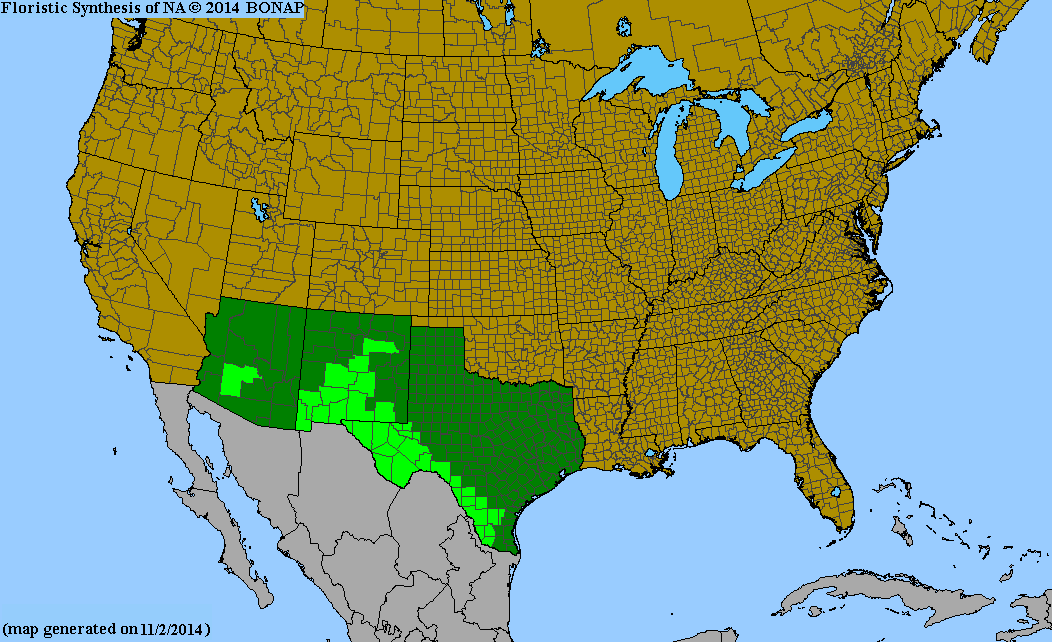 Map Color Key Map Color Key |
Texas Status: Native |
Banner photo of Castilleja indivisa and Lupinus ssp. taken along FM 1323 north of Johnson City, Blanco County
© Tom Lebsack 2025
Every attempt is made to provide accurate, up-to-date, and relevant information, but the completeness or accuracy of any information presented on this website cannot be guaranteed. I use authoritative references to insure high standards of accuracy and review and update the information frequently.
